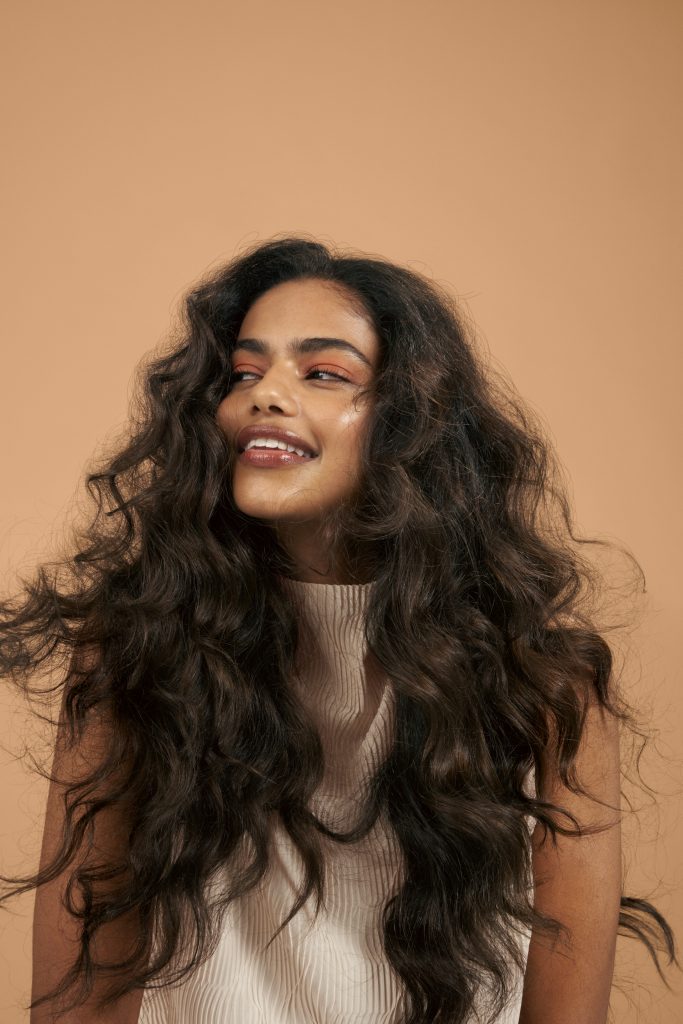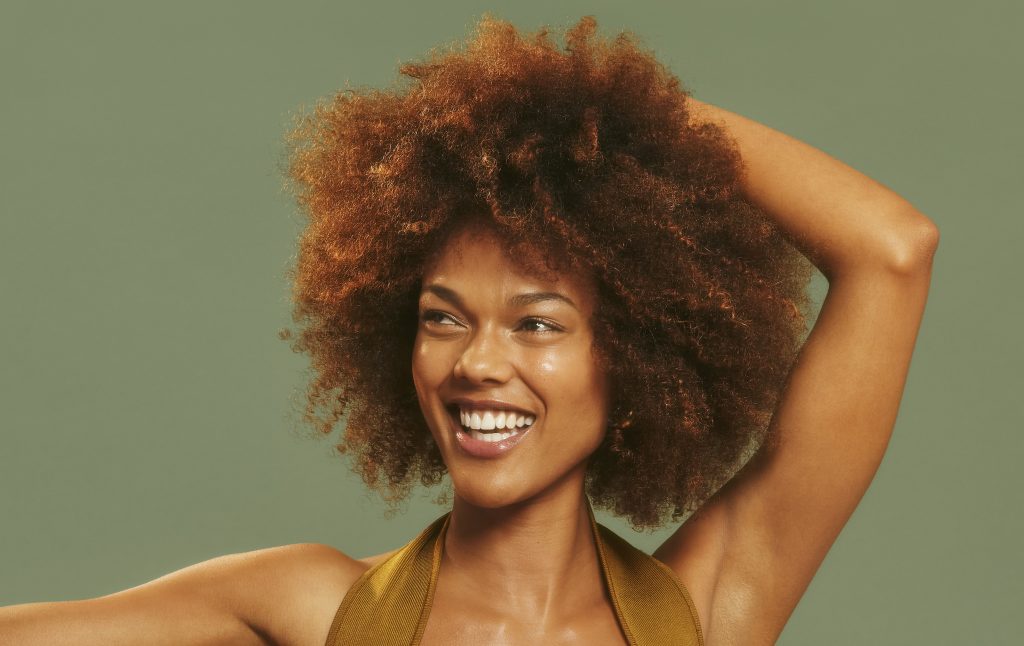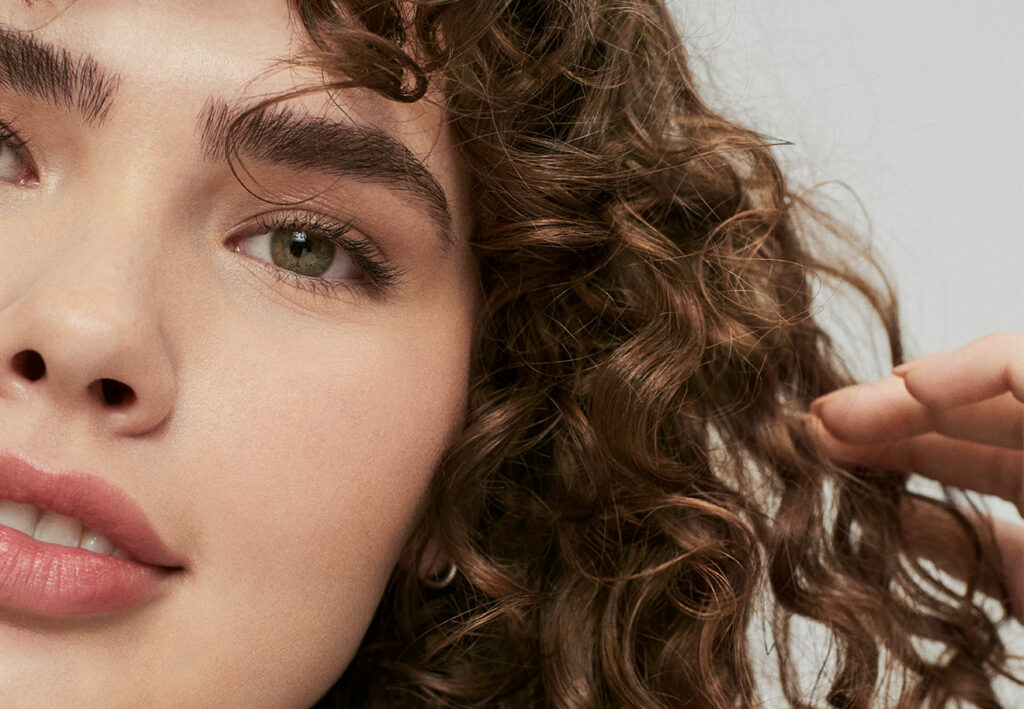What determines our hair type?
Hair grows out of tiny holes on the scalp, known as hair follicles. The shape of your hair follicles is determined by your DNA, which in turn determines your hair type.
If you have oval-shaped follicles, then your hair will be curly. If your hair follicles are round, then your hair will be straight. If it is a little bit of both—round and oval—then your hair will be wavy. While hormonal changes (like pregnancy) can change your hair type, for the most part, your hair type remains the same throughout life.
Your hair type and how to care for it
It is true that no two people have exactly the same hair. However, it is still useful to group hair into different “types,” or categories, so that we can talk about general concerns and needs that we may have. Keep in mind: it is possible for you to have different hair types in different locations. If that’s the case, it’s useful to think of your “type” as whatever you have the most of.
The hair classification system we use today was created by Andre Walker (who worked as Oprah’s stylist) a few decades ago. While the chart leaves out some important factors, such as hair length and hair porosity, it’s still a useful tool for thinking about our hair. Read on to find out your hair type and your best hair routine.
Straight hair

Type 1A: Fine
- Thin strands
- Reflects the most sheen
- Very likely to experience oiliness
Type 1B: Medium
- Medium strand thickness
- Shiny
- More volume and body
Type 1C: Coarse
- Thick
- Dense
- Hard to curl
While there are several types of straight hair, the one thing they all have in common is that the smooth hair shaft allows oil from the hair follicle to easily travel to the root and the hair strand. This keeps hair well-moisturized and gives it a lustrous shine due to its reflective nature.
However, the downside here is that straight hair may get oily quickly. If this is something you experience, it’s important not to wash your hair too often (this can actually increase oil production). Try to keep your scalp healthy by using a shampoo that will help you to control oil production.
Wavy hair

Type 2A: Loose waves
- Loose “S” pattern
- Can be easily brushed straight
This hair type is characterized by a loose, undefined wave. To define your natural texture, try to steer clear of heavy products that can weigh down your hair. Instead, try a curl-defining cream in order to give your hair more definition.
Type 2B: Defined waves
- More defined “S” pattern
- Buildable volume with products
- More likely to experience frizz
This type of hair is also defined by tousled, undefined waves, although they may have more of an s-shape. The good news is that you don’t need to style your hair too much in order to achieve that desired beach-wave look, which can be easily accomplished with a bit of salt spray. However, keep in mind that saltwater can slightly dry out your hair, which is why it is important to ensure that you are regularly conditioning in order to preserve your hair’s health and moisture.
Type 2C: Defined waves / loose curls
- Very well-defined waves
- Hair takes well to products and appears more curly with product
- Very likely to experience frizz
This wavy hair type has the most well-defined curl and tends to be coarser and more prone to frizzing. In addition, it may be slightly harder than type 1 hair for 2C hair to receive oil from the hair follicle, making it more prone to drying.
Just like with the other wavy hair types, wave-defining products will help the natural shape of the hair come out. However, it is especially important for this hair type to add moisture with regular conditioning, hair masks, and leave-in products.
Curly hair

Type 3A: Loose curls
- Loose, springy curls
- Lots of body, especially towards the ends
- Can be prone to unwanted frizz
Type 3B: Tight curls
- Well-defined spiral curls
- Lots of body, beginning from the roots
- Can be prone to unwanted frizz
Type 3C: Corkscrews
- Smaller, defined curls
- Prone to unwanted frizz often
- All over body and volume
Regardless of what curly hair type you have, this hair type is very likely to experience more dryness than type 1 or type 2 hair. As such, make sure to add moisturization whenever possible by regularly conditioning your hair and using leave-in products. When styling your hair, avoid brushing or using a comb to maintain your curl pattern, or comb it through thoroughly for a distinct look.
Although this hair type looks great when down, if you ever need to tie up your hair, make sure to use a hair tie made especially for curly hair in order to minimize damage. Look for satin or silk fabrics for overnight, which are least-likely to disrupt your curls.
Coiled hair

Type 4A: Defined coil
- Tightly coiled
- Prone to unwanted frizz, especially in humid climates
- Shrinks significantly when wet
This hair type has a very well-defined curl structure, which makes it popular for the wash-and-go style. However, if you ever want to heat style your hair, it is super important to use a heat protectant as this type of hair can be very prone to damage. And make sure to keep the temperature below 450 degrees, especially if you have fine strands.
Type 4B: Z coil
- Products help to enhance these curls
- “Z” pattern / no defined curl
- Shrinks over 50% of its natural length when wet
4B hair has a unique “z” shape, which can be further accentuated with a curl-defining cream. This hair type tends to be prone to damage and breakage, which is why it is important to limit the use of excessive heat styling and to add moisture whenever possible.
Type 4C: Tight coil
- No defined curl patterns
- Very soft to the touch
- Shrinks up to 75% of its natural length
Because dryness and shrinkage are especially of concern for 4C hair, it is important to use a quality leave-in conditioner or curl cream to restore moisture as often as possible. When it comes to styling, get to know your hair’s curl pattern. The styling possibilities for this hair type are endless- From sleek and straight to bold and voluminous.
Knowing your hair type is the first step
We all have unique hair types determined by our genetics. While the hair classification system isn’t perfect (we are much more than our DNA, after all), it is a great starting point for thinking about your hair type and how you should care for it. For that reason, we recognize your uniqueness and make products that respect, honor, and celebrate you.





